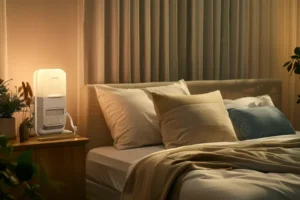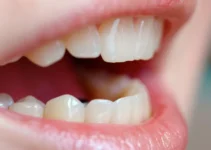Can sleep apnea be cured? This question resonates with millions globally who suffer from this sleep disorder. While there isn’t a one-size-fits-all cure, various treatments can significantly alleviate symptoms and improve quality of life. Options range from lifestyle changes like weight management and altering sleep positions to medical interventions such as CPAP machines or surgical procedures. In some cases, addressing underlying health issues may also help reduce sleep apnea symptoms. Understanding the root causes and exploring these options can guide sufferers towards a more restful night’s sleep.
Understanding Sleep Apnea
Sleep apnea is a potentially serious sleep disorder in which breathing repeatedly stops and starts. The condition can lead to a range of health problems, including hypertension, heart disease, and diabetes. Understanding sleep apnea is crucial for anyone experiencing symptoms or who knows someone affected by the disorder. Research shows that sleep apnea affects millions of people worldwide, with many cases going undiagnosed. The condition can impact people of all ages, but it is more common in adults and those with certain risk factors. Early diagnosis and treatment are essential to managing this disorder effectively.
In this article, we will delve into the specifics of sleep apnea, focusing on what it is, how it can be identified, and various treatment options available. By the end of this read, you should have a more comprehensive understanding of sleep apnea and the importance of addressing it.
What is Sleep Apnea?
Sleep apnea is characterized by repeated interruptions in breathing during sleep. These pauses can last for a few seconds to a few minutes and can occur multiple times per hour. There are three main types of sleep apnea: obstructive sleep apnea (OSA), central sleep apnea (CSA), and complex sleep apnea syndrome, which is a combination of both OSA and CSA.
Obstructive sleep apnea (OSA) is the most common form and occurs when the muscles at the back of the throat fail to keep the airway open. Central sleep apnea (CSA), on the other hand, happens when the brain doesn’t send the proper signals to the muscles that control breathing. Complex sleep apnea syndrome involves elements of both OSA and CSA, making it a more complicated condition to diagnose and treat.
Key symptoms of sleep apnea include:
- Loud snoring
- Episodes of breathing cessation during sleep
- Gasping for air during sleep
- Excessive daytime sleepiness
- Difficulty concentrating
- Morning headaches
If you notice any of these symptoms in yourself or a loved one, it is important to consult a healthcare provider for a thorough evaluation.
Understanding and recognizing the signs and symptoms of sleep apnea can lead to earlier diagnosis and more effective treatment. It is not just about improving sleep quality but also about safeguarding your overall health. For more insights into sleep-related disorders and treatment options, browse through our other articles to stay informed.
Effective Treatments for Sleep Apnea
Sleep apnea is a common sleep disorder that affects millions worldwide. It occurs when a person’s breathing is interrupted during sleep, leading to poor sleep quality and various health risks. Fortunately, several effective treatments are available to manage this condition. This article will explore three primary treatments for sleep apnea: Continuous Positive Airway Pressure (CPAP) therapy, oral appliances, and lifestyle changes.
Understanding and choosing the right treatment for sleep apnea is crucial for improving sleep quality and overall health. Each treatment comes with its benefits and considerations, which we will discuss in detail.
Continuous Positive Airway Pressure (CPAP) Therapy
Continuous Positive Airway Pressure (CPAP) therapy is one of the most commonly prescribed treatments for moderate to severe sleep apnea. It involves wearing a mask connected to a machine that provides a steady stream of air to keep the airways open during sleep. Studies have shown that CPAP therapy can significantly reduce the number of apnea episodes and improve sleep quality.
One of the primary benefits of CPAP therapy is its *efficacy*. When used consistently, it can improve daytime alertness, reduce blood pressure, and decrease the risk of heart problems. However, some patients find it challenging to get used to wearing the mask, which can lead to non-compliance.
To maximize the effectiveness of CPAP therapy, it is essential to ensure that the mask fits properly and to maintain regular follow-ups with your healthcare provider. Adjustments might be needed to find the most comfortable settings that suit individual needs.
Oral Appliances
Oral appliances are another effective treatment option for sleep apnea, particularly for those with mild to moderate forms of the condition. These devices are custom-fitted by a dentist and work by repositioning the jaw to keep the airway open during sleep. Oral appliances might be a more comfortable and convenient alternative for patients who find CPAP therapy difficult to tolerate.
Some of the advantages of using oral appliances include their *portability*, ease of use, and lower maintenance compared to CPAP machines. These devices are often small and discreet, making them a popular choice for people who travel frequently.
However, it is essential to have regular follow-ups with your dentist to ensure the device remains effective and comfortable. Possible side effects include jaw discomfort, dry mouth, and changes in bite alignment. Despite these potential drawbacks, many patients find oral appliances a viable option for managing their sleep apnea.
Lifestyle Changes
Lifestyle changes play a significant role in managing sleep apnea, especially for individuals with mild symptoms. Adopting healthier habits can complement other treatments and, in some cases, even reduce the severity of the condition. Several key lifestyle changes can help:
- Weight loss: Excess weight, particularly around the neck, can obstruct the airway. Losing weight can reduce the severity of apnea episodes.
- Exercise: Regular physical activity improves overall health and can help manage sleep apnea symptoms.
- Avoiding alcohol and smoking: Both can relax the muscles around the throat, exacerbating sleep apnea symptoms.
- Sleeping position: Elevating the head of the bed or sleeping on your side can help prevent airway obstruction.
While these lifestyle changes can significantly improve sleep apnea symptoms, they are often most effective when combined with other treatments like CPAP therapy or oral appliances. Patients should work with their healthcare providers to create a comprehensive treatment plan tailored to their specific needs.
Learning about different treatment options for sleep apnea is essential for making informed decisions about managing your condition. For more detailed information on related topics, consider reading our other articles that delve deeper into sleep health and treatment options.
Surgical Options for Sleep Apnea
Sleep apnea is a serious sleep disorder that affects millions of people worldwide. While continuous positive airway pressure (CPAP) therapy is often effective, it isn’t suitable for everyone. For those who cannot tolerate CPAP or for whom it does not work, surgical options may be considered. These surgeries aim to remove or reposition tissue to open up the airway and improve airflow during sleep.
Surgical interventions can vary widely in terms of complexity, recovery time, and effectiveness. Before opting for surgery, it is crucial to have a comprehensive evaluation by a qualified specialist to determine the most appropriate treatment. This article delves into two common surgical options for sleep apnea: Uvulopalatopharyngoplasty (UPPP) and Genioglossus Advancement (GA).
Understanding these surgical options is essential for making an informed decision about your treatment. We will explore the procedures, benefits, and potential risks associated with each, helping you to weigh your options carefully.
Uvulopalatopharyngoplasty (UPPP)
Uvulopalatopharyngoplasty, commonly known as UPPP, is one of the most frequently performed surgical procedures for treating obstructive sleep apnea (OSA). The primary goal of UPPP is to remove excess tissue from the throat to widen the airway. This procedure typically involves the removal of the uvula, a part of the soft palate, and tissues from the pharynx.
The effectiveness of UPPP varies among patients. Studies suggest that UPPP can reduce the severity of sleep apnea in certain individuals, particularly those with mild to moderate OSA. However, its success rate tends to be lower for those with severe OSA or for patients who are obese. It is essential to have a thorough pre-surgical evaluation to determine if UPPP is suitable for you.
UPPP carries potential risks and complications, such as bleeding, infection, and changes in voice or swallowing. It is crucial to discuss these risks with your surgeon beforehand. Post-operative care often includes pain management, dietary adjustments, and follow-up visits to monitor the healing process.
Patients considering UPPP should weigh the benefits of potentially improved sleep quality and reduced apnea episodes against the possible risks. Consulting with a sleep specialist and an otolaryngologist can provide further insights into the suitability of this procedure based on individual health factors.
Genioglossus Advancement (GA)
Genioglossus Advancement, or GA, is another surgical option aimed at treating obstructive sleep apnea. The genioglossus muscle is one of the key muscles responsible for tongue movement and plays a significant role in maintaining an open airway. During GA, a portion of the lower jaw is repositioned to pull the tongue forward, thus preventing it from collapsing back into the throat and obstructing the airway during sleep.
GA is often considered for patients who have a significant tongue-related obstruction contributing to their sleep apnea. By advancing the genioglossus muscle, this procedure can help to stabilize the airway and reduce apnea episodes. Studies indicate that GA can be particularly effective when combined with other surgical procedures such as UPPP, offering a comprehensive approach to treating sleep apnea.
As with any surgical intervention, GA comes with potential risks, including infection, nerve damage, and changes in the positioning of teeth. A detailed pre-operative assessment and imaging studies are critical to planning the surgery effectively. Post-operative care may involve pain management, dietary modifications, and follow-up appointments to ensure optimal recovery.
Patients considering GA should discuss the potential benefits and risks with their healthcare providers. Understanding the comprehensive impact of this surgery on airway management and overall health is crucial for making an informed decision. Additional evaluations by a sleep specialist and maxillofacial surgeon can provide a more tailored approach to your treatment plan.
Exploring surgical options for sleep apnea can be daunting, but understanding procedures like Uvulopalatopharyngoplasty (UPPP) and Genioglossus Advancement (GA) offers a clear starting point. For more in-depth information on sleep apnea treatments and other related topics, be sure to check out our other articles.
Innovative and Emerging Therapies
In recent years, advances in medical technology and research have led to the development of innovative and emerging therapies that offer new hope for patients with complex oral health needs. These therapies are particularly crucial for those who require specialized care due to unique anatomical or physiological challenges. In this section, we will explore some of the most promising new treatments that are reshaping the field of dental implantology and bone regeneration.
From hypoglossal nerve stimulation to positional therapy and adaptive servo-ventilation (ASV), these cutting-edge techniques not only improve patient outcomes but also expand the possibilities for comprehensive oral health care. As we delve into each of these therapies, it becomes evident how technology and innovation continue to transform the landscape of dental medicine, offering tailored solutions that cater to the specific needs of each patient.
Hypoglossal Nerve Stimulation
Hypoglossal Nerve Stimulation (HNS) is emerging as a groundbreaking therapy, particularly for patients with obstructive sleep apnea (OSA). HNS involves stimulating the hypoglossal nerve, which controls the muscles of the tongue. By activating this nerve, the therapy ensures that the tongue does not collapse backward, thus preventing airway obstruction during sleep.
Clinical studies have shown significant improvement in sleep quality and a reduction in the severity of OSA symptoms in patients undergoing HNS therapy. Researchers have discovered that proper stimulation can lead to better breathing patterns and fewer apneic events, making it a viable alternative for those who cannot tolerate continuous positive airway pressure (CPAP) therapy.
Additionally, HNS is particularly beneficial for patients who exhibit specific anatomical characteristics that make traditional therapies less effective. By targeting the underlying neural pathways responsible for airway control, HNS provides a tailored treatment option that addresses the root cause of airway obstruction.
Positional Therapy
Positional therapy is another innovative approach aimed at addressing sleep-related disorders, particularly in patients who experience positional obstructive sleep apnea (POSA). This condition occurs when apneic events are primarily triggered by the patient’s sleeping position, usually when lying on their back. Positional therapy involves strategies and devices designed to encourage patients to sleep on their sides, thereby reducing airway obstruction.
Common positional therapy techniques include the use of specialized pillows, belts, and electronic devices that gently prompt the patient to change their sleeping position when they roll onto their back. Studies have demonstrated that consistent use of these devices can result in a marked decrease in apneic events, leading to improved sleep quality and overall health outcomes.
Moreover, positional therapy is a non-invasive and cost-effective option, making it an attractive choice for patients seeking alternatives to more invasive treatments. It can be particularly useful as a supplementary therapy, enhancing the efficacy of other treatments such as CPAP and oral appliances.
Adaptive Servo-Ventilation (ASV)
Adaptive Servo-Ventilation (ASV) represents a significant advancement in the management of complex sleep disorders, particularly in patients with central sleep apnea (CSA) and Cheyne-Stokes respiration (CSR). ASV is a form of non-invasive ventilation that continuously monitors the patient’s breathing patterns and adjusts the pressure support accordingly to maintain stable ventilation. Unlike traditional therapies that provide constant pressure, ASV dynamically adapts to the patient’s needs in real-time, ensuring optimal airflow and reducing the incidence of apneic and hypopneic events. Clinical trials have shown that ASV can significantly improve both sleep quality and cardiovascular outcomes for patients with CSA and CSR.
ASV is particularly beneficial for patients who have not responded well to other forms of therapy, such as CPAP or BiPAP. Its ability to tailor the support pressure to the patient’s individual breathing patterns makes it a highly effective treatment for those with complex sleep-disordered breathing.
In conclusion, the development of innovative and emerging therapies such as Hypoglossal Nerve Stimulation, Positional Therapy, and Adaptive Servo-Ventilation is revolutionizing the field of dental implantology and bone regeneration. These therapies not only offer new hope for patients with specific needs but also underscore the importance of personalized medicine in achieving optimal health outcomes. To learn more about the latest advancements in dental medicine, explore our other articles on cutting-edge treatments and technologies.
Common Questions About Curing Sleep Apnea
Understanding the potential for curing sleep apnea is crucial for those affected by this sleep disorder. Here are some frequently asked questions regarding treatment outcomes and possibilities.
Can sleep apnea be completely cured?
In some cases, sleep apnea can be effectively managed or even resolved, particularly if it is caused by lifestyle factors such as obesity, nasal congestion, or certain sleeping positions. Lifestyle changes, medical interventions like CPAP machines, and sometimes surgery can dramatically alleviate symptoms. However, whether sleep apnea can be considered “cured” depends on its underlying cause and severity. It’s essential to consult with a healthcare provider for a personalized assessment and treatment plan.

My name is Salman Kapa, a 73-year-old expert in bone regeneration and dental implantology. With decades of experience in the field, I am dedicated to advancing our understanding of oral health and hygiene. Through my research and writing, I aim to contribute to the development of innovative solutions in dental care.




